Entrar al mundo del surf, donde la emoción de cabalgar las olas entusiasma a todos los niveles de surfistas. Sin embargo, lo que está primero siempre es la seguridad y el respeto por el océano para ayudar a los surfistas a mantenerse seguros en el mar, formando una cultura de seguridad en el surf que beneficia a todos los que están en el agua. Cubrimos todo, desde conocer la playa hasta elegir la tabla de surf adecuada. Estos consejos son útiles tanto si estás empezando como si ya coges olas con regularidad. ¡Prepárate para tu aventura de surf con algunos consejos útiles!
1. Consulta el tiempo para navegar con seguridad
Si planeas ir a hacer surf cualquier día, empieza por consultar el tiempo, ya que este influye significativamente en las condiciones del océano, afectando el tamaño de las olas, la dirección del viento y la fuerza de la corriente. Por ejemplo, los vientos fuertes provocan olas grandes y la dirección del viento también cambia la forma en que se forman las olas.
Una vez que tengas una idea clara de cómo será el océano, podrás evitar situaciones peligrosas como quedar atrapado en corrientes fuertes, ser sorprendido por grandes olas o quedar atrapado en una tormenta.
Reconociendo la Consejos de seguridad para navegar y Normas de seguridad en el surf Al igual que comprobar las condiciones meteorológicas, mejora la experiencia de navegación y reduce el riesgo de encontrarse con situaciones peligrosas en el océano.
2. Cuida tu etiqueta al surfear
La etiqueta del surf es un conjunto de reglas del surf que garantizan la seguridad de todos en el agua.
Estas normas en el agua incluyen entender quién tiene derecho de paso, compartir las olas en lugar de “meterse” en ellas y usar siempre una correa por seguridad.
Además, estas reglas no escritas son parte de respetar a los surfistas locales, conservar tu tabla si te caes y dejar la playa más limpia de lo que la encontraste.
La buena etiqueta del surf previene colisiones, lesiones y mantiene una atmósfera positiva.
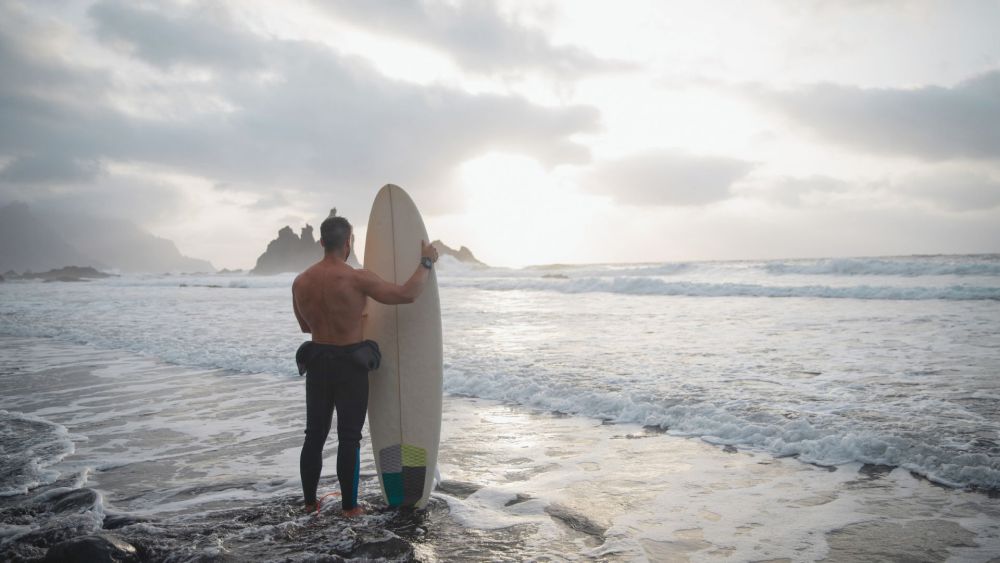
3. Conozca sus límites
Un aspecto esencial de seguridad en el surf Es la autoconciencia y el reconocimiento de los propios límites.
No todas las olas son adecuadas para todos los surfistas; ten en cuenta que debes surfear dentro de tu nivel de habilidad.
Antes de adentrarte en el agua, comprueba aspectos como el tamaño de las olas y la fuerza de las corrientes. Si parece demasiado difícil, es mejor esperar otro día. Comienza con movimientos de surf fáciles y ve avanzando poco a poco hasta llegar a los más difíciles. De esta forma, evitarás lesiones y aprenderás de forma segura.
Un lugar con fondo de arena y menos corrientes de resaca es ideal para principiantes. Si no estás seguro de dónde surfear, pide consejo a tus amigos surfistas o a un instructor. No hay nada de malo en dar un paso atrás y mejorar tus habilidades gradualmente.
Al evaluar tus habilidades honestamente y elegir olas que coincidan con tu experiencia, mantienes la clave Consejos de seguridad para navegar y garantizar un entorno más seguro para todos en el surf.
4. Conozca las aguas
Para conocer las aguas locales, debe familiarizarse con las características específicas del lugar de surf, como la presencia de corrientes de resaca, rocas y patrones de olas típicos.
Vamos a arrojar luz sobre estos aspectos:
- Mareas y corrientes: Las mareas y las corrientes dan forma a las olas que afectan a tu capacidad para hacer surf. Los diferentes lugares para hacer surf pueden ser mejores con mareas altas o bajas. Además, ten cuidado con las corrientes de resaca, que son canales de agua de rápido movimiento que pueden ser peligrosos. Evita hacer surf en áreas con fuertes corrientes de resaca.
- Mareas: Las mareas crean un ritmo que afecta cómo y dónde rompen las olas. A veces, más o menos agua cubre la orilla, lo que cambia el comportamiento de las olas.
- Olas rompientes: También importa cómo rompe una ola (en una punta, en un arrecife o en una playa). A medida que pases más tiempo en el agua, comenzarás a notar cómo las diferentes mareas afectan a los distintos tipos de olas.
- Factores y peligros locales: Cada lugar para practicar surf tiene características y riesgos únicos. Tenga cuidado con elementos como arrecifes, rocas y la presencia de otros surfistas.
Consejos prácticos para leer el océano:
Comience por utilizar pronósticos de olas confiables para reunir información detallada sobre el oleaje, el viento y las mareas en su lugar de surf. A continuación, invierta tiempo en observar el océano, prestando mucha atención a los patrones y comportamientos de las olas y tomando nota de los cambios.
Contacta con surfistas experimentados, ya que pueden ofrecerte información y consejos valiosos sobre las características específicas y los posibles riesgos de tu lugar de surf. Por último, confía en tus instintos: si las condiciones parecen inseguras o superan tu nivel de habilidad, es mejor posponer la sesión o buscar un lugar más seguro.
5. Use ropa adecuada
Cuando te preparas para surfear, cada pieza de tu vestimenta y equipo tiene una función para mantenerte seguro y mejorar tu rendimiento.
Cómo elegir el traje de neopreno, rashguard u otro tipo de protección adecuados equipo de surf Regula la temperatura corporal y te protege de rozaduras y quemaduras solares.
Además, es fundamental utilizar una correa que se ajuste correctamente y la tabla de surf correcta para tu nivel de habilidad. Consejos de seguridad para hacer surf . Es como un salvavidas que mantiene tu tabla cerca, evitando que se pierda en las olas o provoque accidentes. Luego está el traje de neopreno, tu escudo contra el frío, especialmente en aguas heladas, y te ayuda a evitar arañazos de las rocas o golpes con otras tablas.
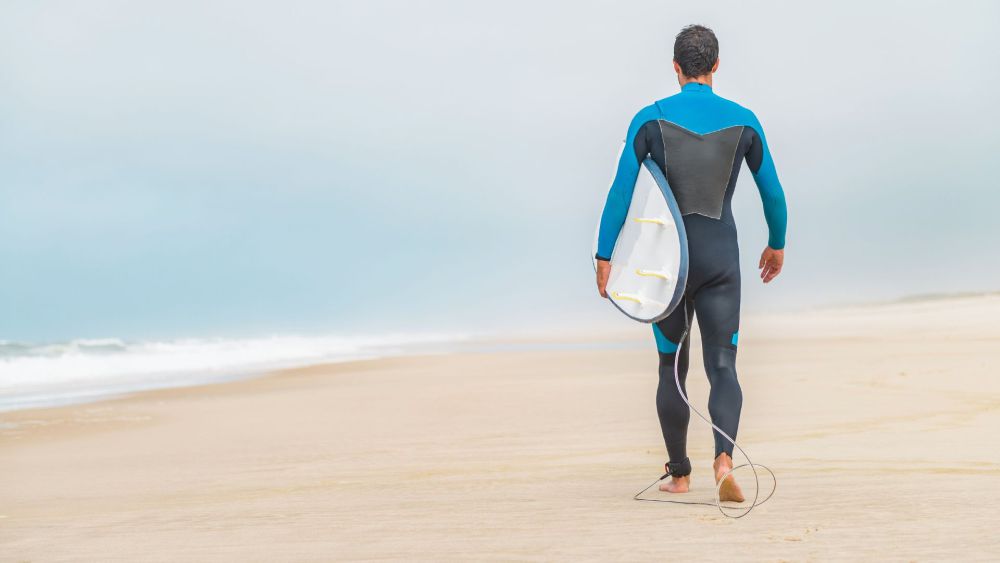
6. Esté siempre atento a otros surfistas
El surf implica mucho más que simplemente... atrapar una ola ; también se trata de estar en sincronía con otros en el océano.
La etiqueta del surf, parte de la cultura del deporte, gira en torno al respeto de las reglas tácitas de la playa y el mar. Esto significa ser plenamente consciente de lo que te rodea, incluidos los demás surfistas. Cuando llegas a un lugar nuevo, los surfistas locales son las primeras personas a las que debes pedir consejo, ya que están familiarizados con el complejo específico de la zona.
Como cada playa tiene sus propias normas y reglas, conocerlas antes de salir a remar hará que tu viaje sea más libre de preocupaciones. Se trata de respetar el espacio de todos en el agua, ceder el paso al surfista más cercano a la cima de la ola y no dejar que los demás se queden atrás. Los surfistas no son los únicos en el agua; respetar todo el entorno de la playa, incluidos los demás bañistas, como los nadadores y los practicantes de bodyboard, es parte de la experiencia.
En esencia, el surf contribuye a una cultura de respeto y cuidado mutuos, garantizando una experiencia positiva y segura para todos los surfistas en la alineación.
7. Revise su correa y sus aletas
Una correa bien mantenida mantiene tu tabla atada de forma segura a ti, lo que resulta de gran ayuda en condiciones difíciles.
De la misma manera, unas aletas en buen estado son fundamentales para realizar maniobras precisas. Por ello, las revisiones periódicas de estos aparatos pueden mejorar significativamente tu seguridad y confianza en el agua, haciendo que tu experiencia de surf sea agradable y segura.
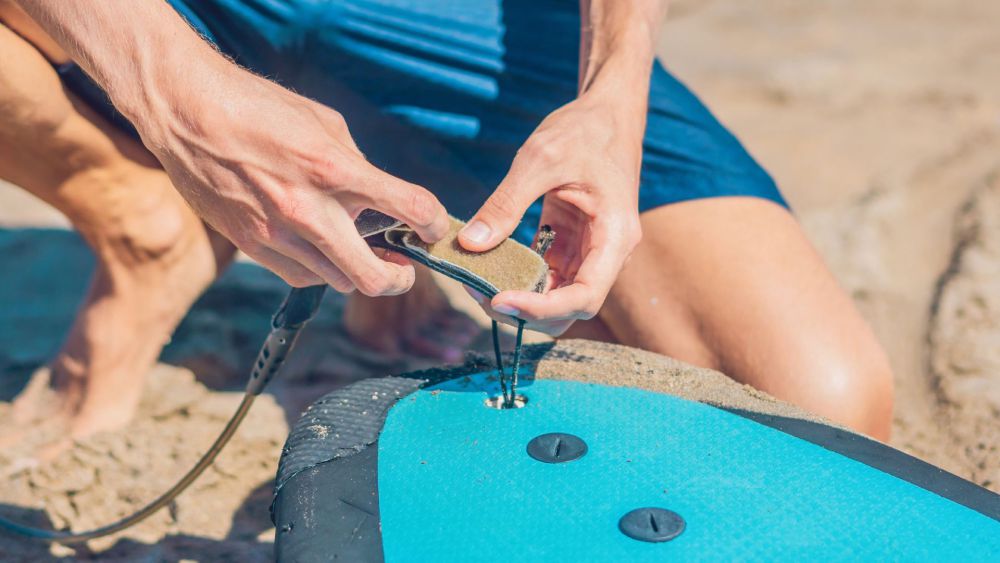
8. Tenga cuidado con las corrientes de resaca
Las corrientes de resaca suponen un desafío importante para el surf, pero se pueden manejar de forma segura con conocimiento y conciencia.
Estas corrientes, que se forman cuando las olas se retiran hacia el océano, crean potentes corrientes de agua que se dirigen hacia el mar. Son especialmente peligrosas para principiantes o para quienes no saben nadar bien. Las corrientes de resaca se pueden identificar como canales de agua picada con menos olas rompientes.
Si te encuentras atrapado en una corriente de resaca, lo mejor es mantener la calma, permanecer sobre la tabla de surf para flotar mejor y remar o nadar en paralelo a la orilla. Esta estrategia te ayuda a salir de la fuerza de la corriente de resaca, lo que te permite nadar de regreso a la playa de manera segura.
¿Es peligroso hacer surf ? Puede serlo, especialmente si no tienes cuidado con las corrientes de resaca. Nadar directamente contra una corriente de resaca no es efectivo y puede agotarte rápidamente. Mantente atento a las banderas de advertencia como "Oleaje alto" o "Corriente fuerte", que indican condiciones de surf potencialmente peligrosas. Si alguna vez no estás seguro sobre la seguridad de las aguas, es mejor que te quedes afuera y juegues a lo seguro.
9. Únase a un compañero para navegar de forma más segura
Tener a alguien a tu lado significa que siempre habrá alguien que te vigile, y viceversa.
En caso de que surja algún problema, como quedar atrapado en una corriente de resaca o sufrir una caída, tu compañero estará allí para ayudarte o conseguir ayuda. También se trata de compartir la alegría de surfear, celebrar las buenas olas y mejorar juntos. Por lo tanto, considera llevar a un amigo la próxima vez que planees una sesión de surf.
Hace que la experiencia sea más segura y, a menudo, mucho más divertida.
10. Sujete su tabla
Mantener un agarre firme en tu tabla de surf garantiza tu seguridad y la de quienes te rodean.
Cuando sueltas tu tabla, corres el riesgo de perder tu dispositivo de flotación principal y provocar accidentes. Tu tabla, sujeta por una correa, puede tener una gran circunferencia de movimiento a tu alrededor. Si pierdes el control de ella, especialmente en zonas concurridas, puede golpear a otros surfistas o nadadores, lo que podría provocar lesiones.
Por ejemplo, algunos surfistas han reportado cicatrices permanentes en incidentes en los que otros han soltado sus tablas para sumergirse bajo una ola que se acercaba. Es particularmente peligroso en lugares concurridos, donde tu tabla, atada a una correa de 6 a 10 pies, puede alcanzar a otras personas que pueden estar bastante lejos de ti. Incluso en situaciones en las que se produzcan grandes olas, ten siempre en cuenta dónde está tu tabla y cómo puede afectar a los demás a tu alrededor.
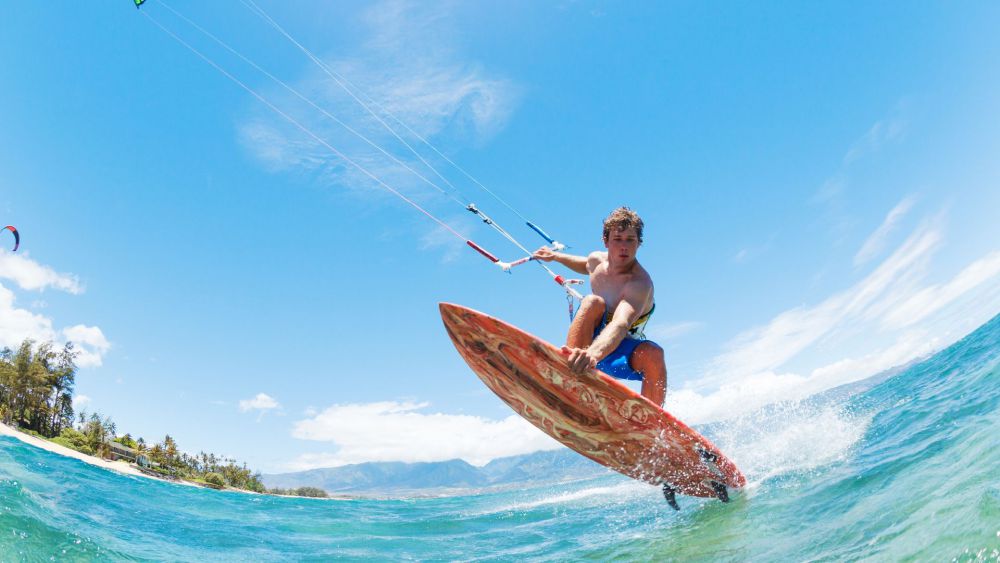
11. Protege tu cabeza
Siempre que te caigas o te caigas, prioriza siempre proteger tu cabeza.
Nuestra cabeza es conocida como el centro de control junto con el cerebro, los ojos y los oídos. Por lo tanto, el peor escenario es cuando te caes y te golpeas la cabeza. A veces, el fondo del océano tiene elementos duros como arrecifes o rocas, y caer sobre ellos puede hacerte mucho daño en la cabeza. Además, durante una caída, tu tabla de surf puede golpearte en la cabeza, algo que debes evitar.
Esta precaución minimiza el riesgo de sufrir lesiones con la tabla o el fondo del océano, especialmente en aguas poco profundas. Cubrirse la cabeza con los brazos puede reducir significativamente el impacto durante una caída.
También es importante saber cómo caer de forma segura. Si el agua es poco profunda y hay rocas o arrecifes, intenta caer boca abajo para evitar golpear el fondo con demasiada fuerza. Si el agua es más profunda o el fondo es arenoso, no es tan arriesgado.
12. Planifique su entrada y salida
Planificar estratégicamente los puntos de entrada y salida cuando se encuentran rocas, arrecifes o corrientes fuertes al surfear implica comprender los mejores lugares para entrar y salir del agua.
Los surfistas experimentados tienden a buscar partes de la playa donde las olas rompen en un patrón regular y hay un camino despejado hacia el agua, lo que hace que sea más fácil entrar y salir.
Antes de saltar, observa el agua durante un rato para ver cuáles son los lugares más seguros. La marea también puede marcar una gran diferencia. En algunas playas, entrar y salir del agua es más fácil cuando la marea está alta porque las condiciones pueden ser más seguras que cuando la marea está baja. Cuando hayas terminado de surfear y estés listo para regresar, intenta elegir un lugar para salir donde no haya obstáculos y las olas estén un poco más tranquilas.
13. Use protector solar y manténgase hidratado
Pasar tiempo al sol mientras surfeas puede ser excelente para tus niveles de vitamina D y mejorar tu estado de ánimo.
Para proteger tu piel, aplica protector solar con al menos FPS 30, cubriendo áreas que a menudo se pasan por alto, como las orejas y la línea del cabello, y vuelve a aplicarlo cada dos horas o después de nadar.
Use ropa protectora, como sombreros de ala ancha y equipo de protección contra los rayos ultravioleta, especialmente de colores brillantes u oscuros, para absorber más rayos ultravioleta, lo que puede protegerlo aún más del sol. Practicar surf fuera de las horas pico de luz solar y buscar sombra durante los descansos también puede reducir la exposición.
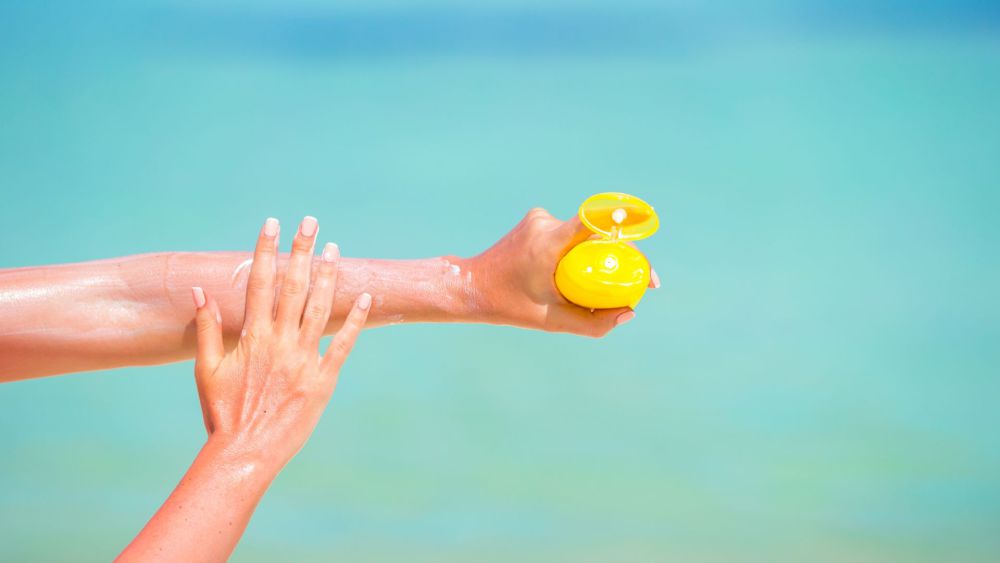
10 equipos de surf esenciales para surfistas
En el mundo del surf de olas grandes, contar con el equipo de seguridad adecuado garantiza una navegación tranquila. Aquí tienes una lista de equipo de surf Para ayudarte a enfrentar esas poderosas olas con confianza:
- Correa para tabla de surf: Este equipo garantiza que tu tabla permanezca adherida a ti, evitando que se desplace o choque inadvertidamente con otros surfistas.
- Tabla de surf con cubierta blanda de espuma: Especialmente beneficiosas para aquellos que recién comienzan a practicar surf, estas tablas ofrecen mayor flotabilidad y tienen menos probabilidades de causar lesiones.
- Casco de surf: Un equipo de seguridad indispensable, el casco protege tu cabeza de posibles impactos con tu tabla, otros surfistas o rocas submarinas.
- Protector de nariz: Este accesorio para la punta de tu tabla de surf añade una capa adicional de protección, ayudando a prevenir lesiones durante caídas.
- Tapones para los oídos: Proteja sus oídos de las infecciones transmitidas por el agua y de la afección común conocida como oído de surfista, frecuente entre los surfistas habituales.
- Potente protector solar: Un artículo imprescindible para proteger tu piel de los intensos rayos UV que encontrarás mientras surfeas.
- Botas de arrecife: Estas botas brindan protección esencial para sus pies contra arrecifes afilados y fondos oceánicos rocosos.
- Aletas blandas: Opte por aletas con bordes suaves para minimizar el riesgo de cortes o lesiones por bordes afilados de las aletas.
- Silbato de seguridad: Una herramienta sencilla pero eficaz para señalar situaciones de emergencia o pedir ayuda.
Cada pieza del equipo garantiza tu seguridad al surfear, especialmente en condiciones difíciles de olas grandes.
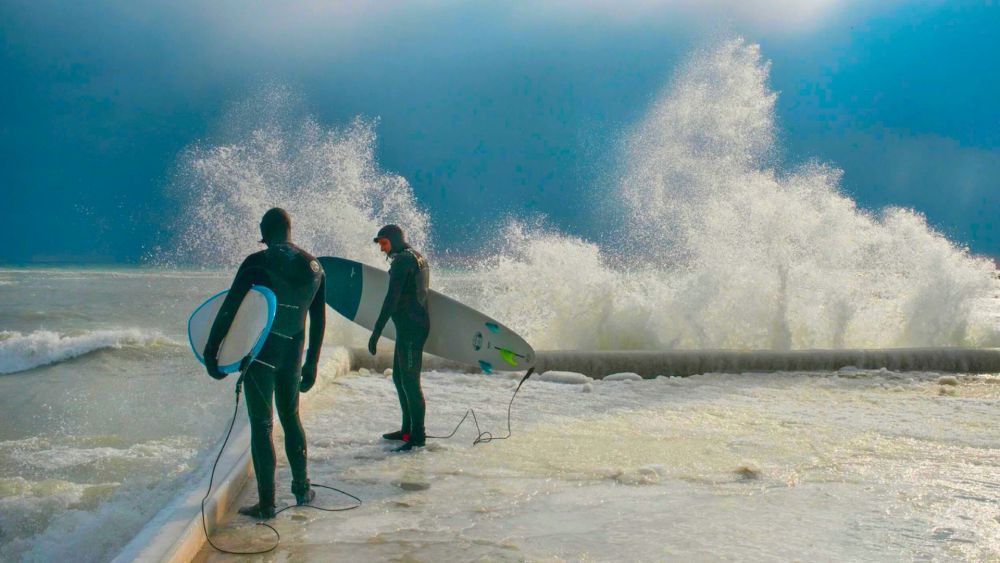
Aleta eléctrica Boost Surfing: una innovación moderna en el surf
La aleta eléctrica Boost Surfing es una innovadora pieza de equipo de surf que se puede conectar a cualquier tabla en 5 minutos para ayudarte a atrapar más olas, ideal para aquellos amantes del surf en olas grandes.
- Instalación y control rápidos: Se fija fácilmente a cualquier tabla de surf en 5 minutos, similar a una aleta estándar, con un control remoto controlado por la muñeca para obtener aumentos de potencia instantáneos.
- Mayor potencia y velocidad: Proporciona un importante empuje de 20 libras, impulsando a los surfistas a velocidades de hasta 10 mph, lo que les permite atrapar más olas sin esfuerzo.
- Diseño robusto y preparado para el océano: Fabricada para satisfacer las exigencias del mar, la aleta Boost Fin cuenta con una estructura resistente a los golpes, lista para surfear olas grandes. Está diseñada meticulosamente para reducir la resistencia y soportar las duras condiciones que suelen encontrarse en el océano.
- Construcción de vanguardia y duración de batería: Fabricada con materiales de alta calidad, la aleta pesa 2,7 libras y mide 10,5” x 9” x 3,5”. Alimentada por una potente batería de iones de litio, garantiza un rendimiento confiable que se adapta bien a las necesidades del surf en olas grandes.
Incorporando la aleta Boost a su Equipo de seguridad para surfear olas grandes La colección marca un avance significativo en el deporte. Su potencia, velocidad y durabilidad mejoran la seguridad y la accesibilidad en condiciones de surf difíciles.
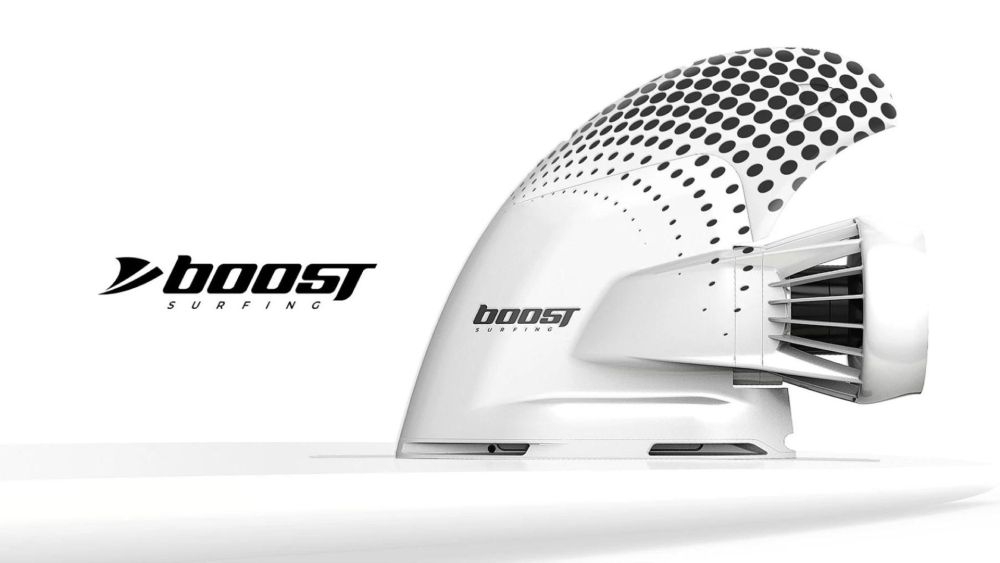
Seguridad en el surf con innovación
En el mundo de Seguridad en el surf : se abre un futuro prometedor a medida que adaptamos los conocimientos tradicionales con la última tecnología, ofreciendo oportunidades emocionantes para los surfistas de todos los niveles.
Productos como el Boost Surfing Aleta eléctrica Simbolizan la nueva ola de tecnología para una experiencia de surf más increíble y con mayor velocidad. Al combinar estas innovaciones, estamos avanzando hacia un entorno acuático más seguro y abierto para todos.


Compartir:
¿Es peligroso el surf? 13 riesgos comunes del surf
Surf en Kirra Beach: tu guía definitiva